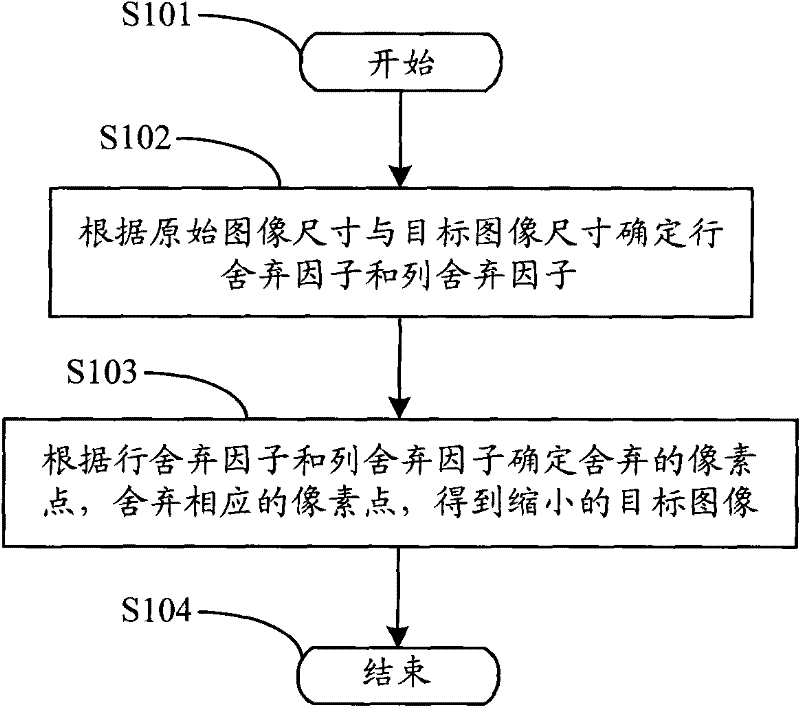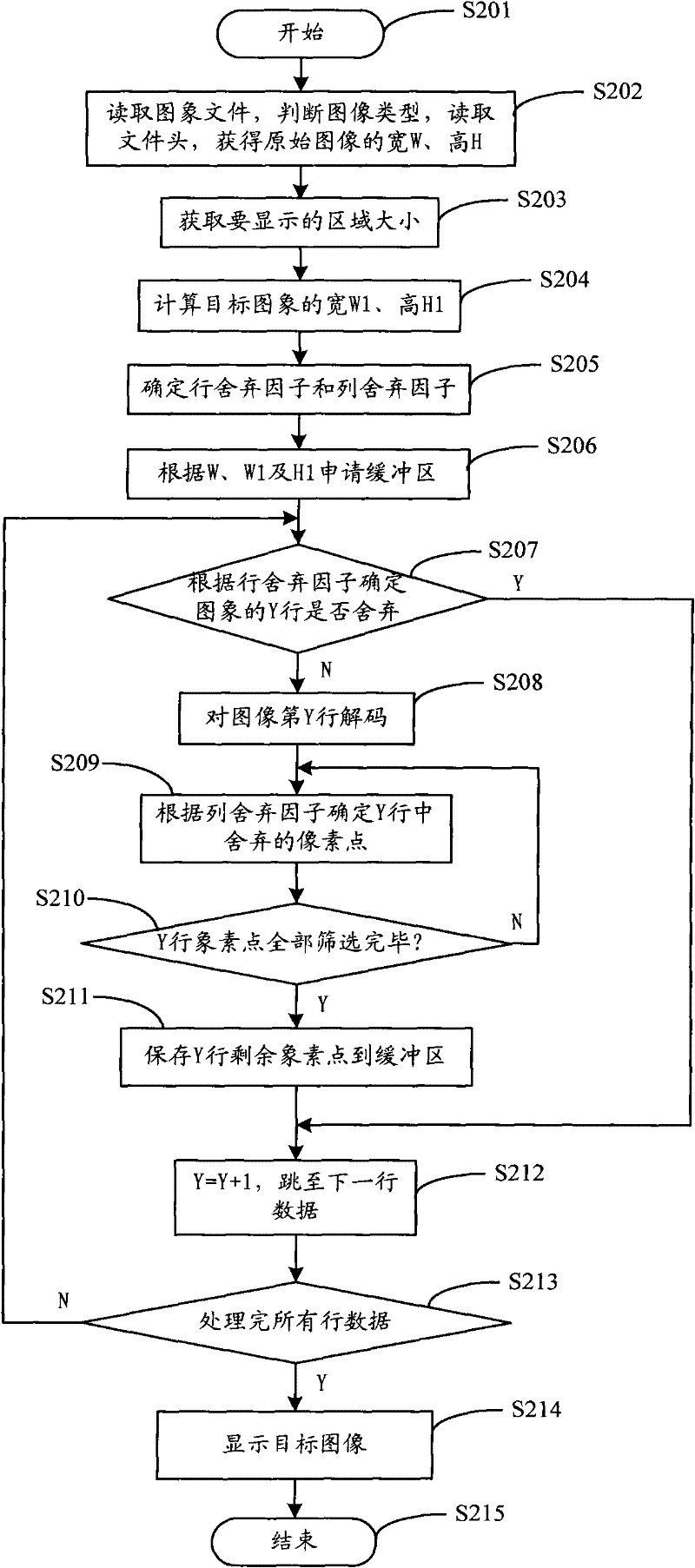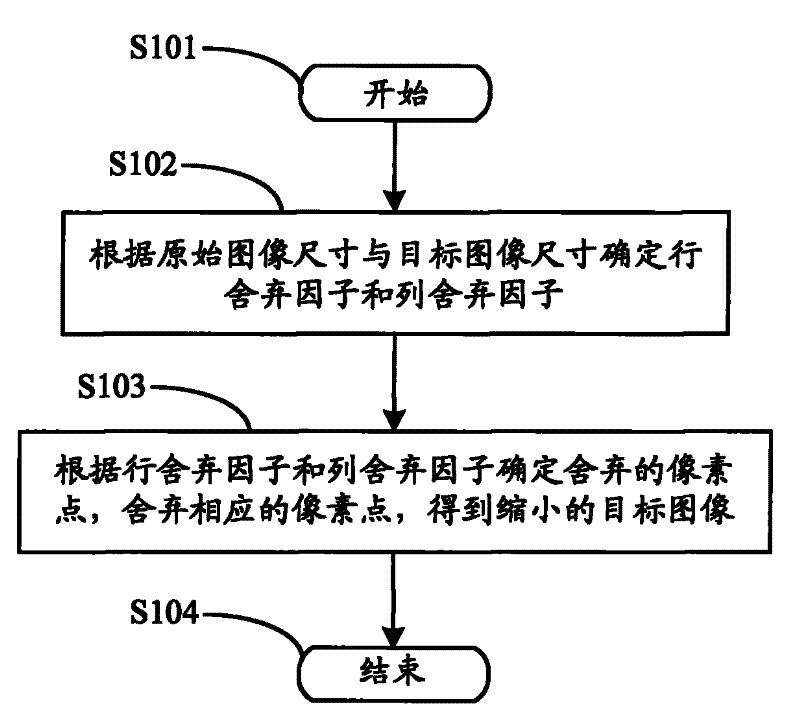Method for zooming out images
An image and original image technology, applied in the field of image processing, can solve problems such as large buffer space, image distortion, discomfort, etc., to achieve the effect of occupying less memory space, saving memory space, and improving quality
- Summary
- Abstract
- Description
- Claims
- Application Information
AI Technical Summary
Problems solved by technology
Method used
Image
Examples
Embodiment 1
[0033] figure 2 Shown is a specific flow chart of an embodiment of the image reduction method of the present invention.
[0034] In the first embodiment, a row is used as a basic unit to discard pixels of an image, so as to reduce the size of the image. The specific process is as follows:
[0035] Step S201: the image reduction process starts.
[0036] Step S202: read the image file, determine the image type, read the file header, and obtain the width W and height H of the original image. In this embodiment, W=10, H=8, that is, the original image size is 10×8.
[0037] Step S203: Obtain the size of the area to be displayed in the target image.
[0038] Step S204: Calculate the width W1 and height H1 of the target image. In this embodiment, firstly, the size of the area to be displayed of the target image is obtained, the compression ratio of the image is calculated, and then the width and height of the target image are calculated according to the compression ratio. In t...
Embodiment 2
[0059] Embodiment 2 has the same steps as Embodiment 1, and the difference from Embodiment 1 is that the size of the original image in Embodiment 2 is 20×20, and the size of the target image is 16×16, that is, W=20, H= 20, W1=16, H1=16. According to the calculation of the row discarding factor and the column discarding factor, it can be known that the positions of the discarded rows of the original image are the 4th row, the 8th row, the 12th row and the 16th row, and the positions of the discarded columns are: Columns 4, 8, 12, and 16.
[0060] In the above embodiments, it is first judged whether the current Y line is discarded, and then decoding is performed. Of course, it is also possible to first decode the current Y row of data, and then determine whether to discard it.
[0061] In the image reduction method of the present invention, the following method can also be used to determine the position of the line that should be discarded in the original image according to th...
PUM
 Login to View More
Login to View More Abstract
Description
Claims
Application Information
 Login to View More
Login to View More - R&D Engineer
- R&D Manager
- IP Professional
- Industry Leading Data Capabilities
- Powerful AI technology
- Patent DNA Extraction
Browse by: Latest US Patents, China's latest patents, Technical Efficacy Thesaurus, Application Domain, Technology Topic, Popular Technical Reports.
© 2024 PatSnap. All rights reserved.Legal|Privacy policy|Modern Slavery Act Transparency Statement|Sitemap|About US| Contact US: help@patsnap.com










